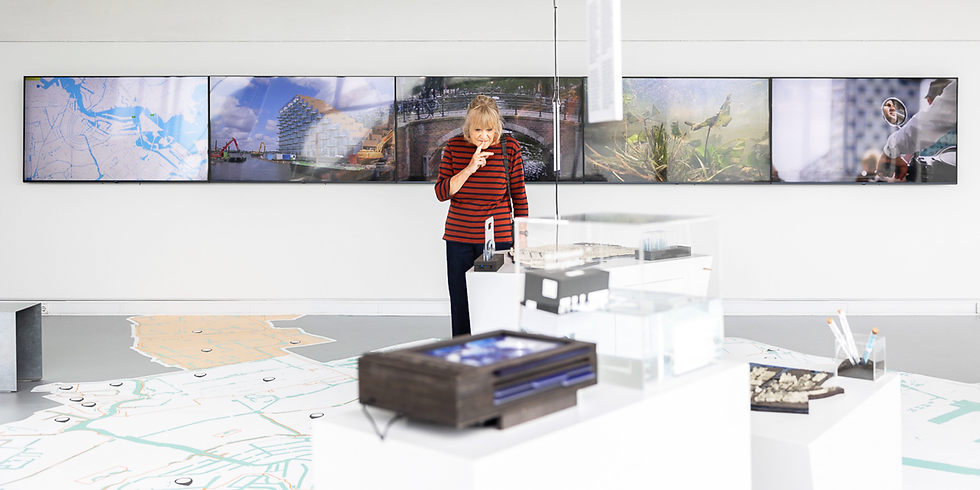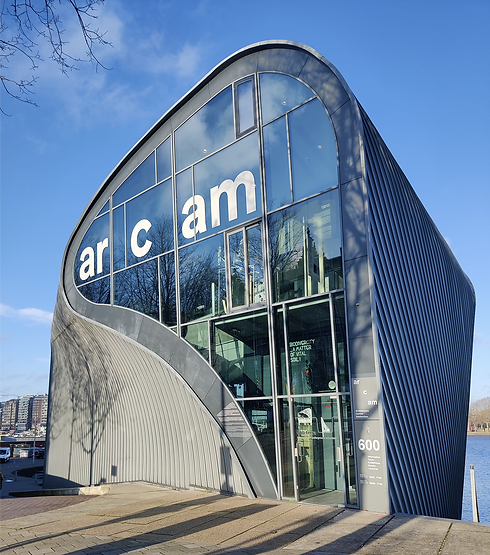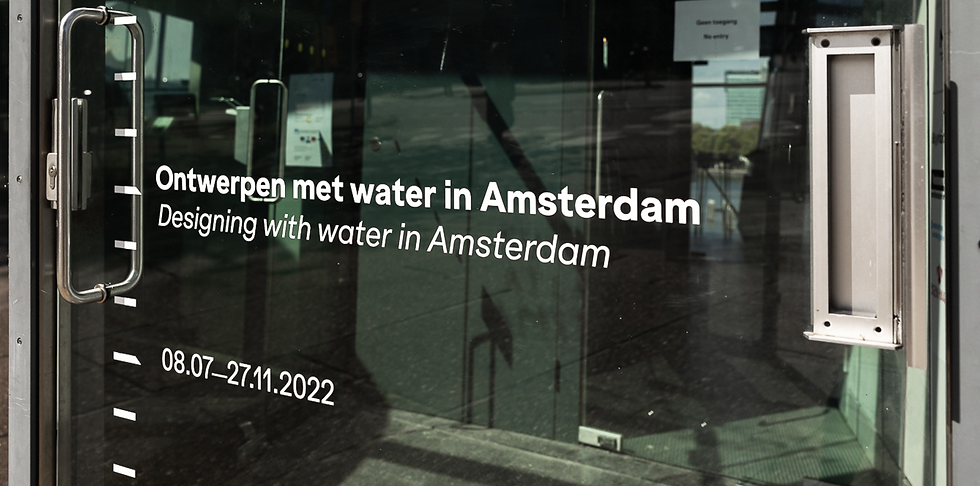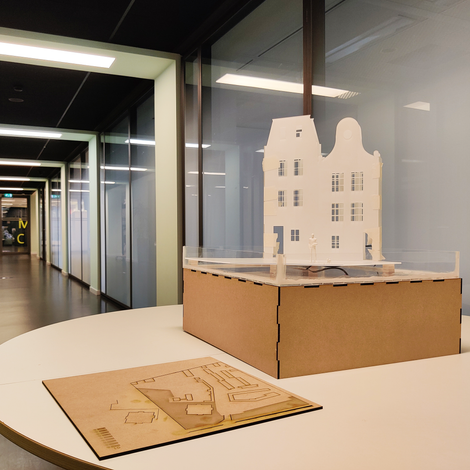THE tIJd MACHINE: Designing with water
CLIENT
ARCAM: Amsterdam Centre for Architecture
MY ROLE
Interaction Designer | Researcher | Illustrator
DURATION
3 months
CATEGORY
Concept development | Storytelling | Interaction Design | Tangible user interactions
THE TEAM
Gonçalo Melo | Marianna Bonellou | Nina Floor Post | Nupur Priya

CONTEXT
Rising water levels are a real threat to the future of Amsterdam and the rest of the world. Studying the past to find solutions for the future may be the key to tackling the crisis which is already at our doorstep. How can we portray this information in a clear and impactful way for the public? How can we make a map tell multiple stories at once?
The Amsterdam Centre for Architecture (ARCAM) uses data visualisations on 4D city models as a design tool and participatory means to inform, decide and speculate on future developments in Amsterdam. Together with the The Amsterdam Time Machine initiative, OBA (Amsterdam Public Library), Waternet and Stadsarchief they are looking into the possibilities to engage a broader public in complex future spatial development scenarios based on historical knowledge.
THE CHALLENGE
As the city’s centre for Architecture, ARCAM is leading the discussions around the past and future of the city.
In their up-coming exhibition, they aimed to explore Amsterdam’s relationship with water and raise awareness about climate change. We were asked to investigate ways in which to visualise multiple layers of information on a scale model, using tangible interactions.


SCOPING THE PROBLEM & RESEARCH DEEP DIVE
Emphasis was placed on having a physical model so that policy makers, urban planners and visitors can gather around it and discuss the future of the city. From the beginning, our challenges were multiple: The model as a physical item is by definition “stuck in time”, meaning it will portray the city at one specific moment in history. Adding layers with the medium of projection was impossible due to the lighting conditions in Arcam’s exhibition space and the use of AR in a tablet or phone would enable very few visitors to look at the same thing together. In addition, determining the scale of the model was a challenge in itself since we had to make sure that water levels were visible, but also fit the entire length of the IJ river in one room.
Since the beginning of this project, our team followed an iterative design process followed by ideation sprint sessions, desk research, field visits to interactive museums & experiences, research on tangible user interfaces, expert interviews to refine project scope.
THE CREATIVE PROCESS
With multiple ideation sessions, a creative sprint, thorough research of similar case studies and technologies, we were able to create a multitude of concepts, all unique in their approach and challenges. We used speculative design techniques to imagine future scenarios regarding man's relationship with water and really deep-dived into what makes us, as humans, empathise and change behaviour. In a final co-creation session with the client, we managed to come up with a unique concept and fit all the needs into a single solution.
PROTOTYPING THE FINAL CONCEPT
We started with small quick sketches, tried a few ideas in rough 3d prototypes and in the end created the final prototype to understand that the technology we proposed could have the desired effect. This enabled us to explain the idea quickly and show the importance of giving the user tangible objects for maximum engagement with the prototype.
We explored different materials & technologies during this project that helped us learn how digital & physical mediums come together to bring an integrated experience of digital design, working with 3D printing, MDF & acrylic Lazer cutting to build physical models, color sensors, Arduino & Raspberry Pi to realize how tangible interactions work!

FINAL CONCEPT- THE tIJd Machine
We created a museum installation piece that brings attention to the issue of rising water levels in Amsterdam at different time periods. By approaching the physical model as a puzzle through time, we enable the user to insert map pieces from different time periods and watch Amsterdam’s relationship with water unfold in corresponding videos. The tiles as objects are an interesting play on the concept of time travel as they can be compared side by side and moved around to become independent conversation tools.
INTERACTIVE INSTALLATION DESIGN ADAPTED BY ARCAM, Amsterdam
In the installation design for the final exhibition, ARCAM used multiple screens with visuals, data and stories from past and future predictions showcasing changes in water levels. Visitors are able to move cards in the black boxes with slots as shown in the image below. As they change the cards, the video changes on the screens displayed on the wall.
PROOF OF CONCEPT- Tangible user interaction with Raspberry Pi
We conceptualised a working prototype to understand the tangible user interaction with RFID tags (attached underneath the 3D printed tiles as shown in the video below) to play videos on the screens when 3D tiles are in contact with the Raspberry Pi & RFID reader set-up. This gave us clarity on how to execute the proposed interaction in our concept and ensure scalability across multiple content and screens in different exhibition forms.
PROJECT IMPACT- Exhibition Fluid Matter by ARCAM, Amsterdam
ARCAM adapted our concept for the final exhibition Fluid Matter - Designing with water in Amsterdam in July 2022. The Amsterdam water system regulates water levels and quality in one of the most densely populated areas of the Netherlands. Due to the urban growth and climate change, the system will be increasingly strained in the future. This means that choices have to be made, but this situation also offers opportunities for new ways of dealing with water. What choices do we have? How can we design with the water?
In the interactive exhibition ‘Fluid Matter – Designing with water in Amsterdam’, visitors will discover this complex water system through four new scale models: Houthavens/Haven-Stad, North/Schoonschip, City Centre/Kattenburg and IJburg /IJmeer. Through interactive models visitors will discover the effects of their choices on the surroundings. This exhibition shows that water is literally liquid matter for a climate-proof city. Some glimpses from the final exhibition Fluid Matter - Designing with water are shared below.






























